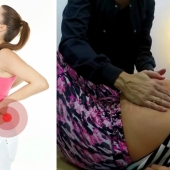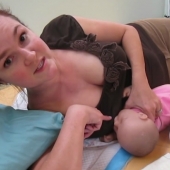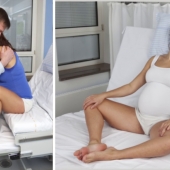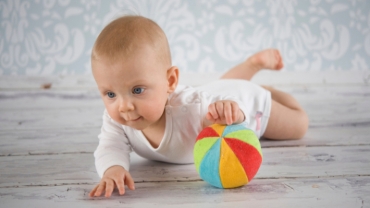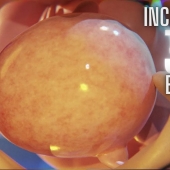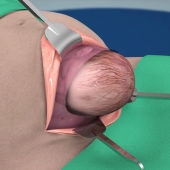Stage 1 : which lasts for12- 19 hours. During this stage,the baby descends lower into the pelvis,with the cervix effacing and dilating. Contractions become stronger and more regular,occurring every 5-20 min,resulting in persistent lower back pain and cramping.
The mucus plug at the opening of the cervix falls out,which is seen as a brownish or reddish discharge. The water also breaks during this stage,which could be in the form of a large gush of fluid, or a trickle. Any of these complaints necessitates the transfer of the patient to the labour room.
Stage 2 : The second stage of labour lasts for 20min - 2 hours. The cervix is fully dilated to about 10 cm,with the baby’s head moving beyond the cervical opening , into the birth canal. The mother is encouraged to push during contractions,and rest in between them. In a normal delivery, the head rotates to face the mother’s back.
During active labour,the uterus is divided into an active segment which contracts,to push the baby downwards, and a passive segment ,which relaxes and stretches, to create space for the baby to pass through.
The appearance of the top of the baby’s head, is known as crowning. An episiotomy can be performed at this stage,which is an incision in the midline or mediolateral to it,to increase the vaginal opening,for the delivery of the baby.
With the mother pushing during contractions, the baby’s head elongates, during its passage through the birth canal.This elongation of the head, will eventually resolve a few days after birth,with the skull bones shifting back to their original positions.
After the baby’s head exits the birth canal, the head and shoulders begin to rotate,to help the shoulders pass through the birth canal.The baby’s shoulders are delivered one after the other,in order to fit through the mother’s pelvis.
Once the shoulders emerge through the birth canal,the rest of the baby slides out easily. After the baby is born,the umbilical cord is then cut,by the doctor or midwife.
Stage 3 : This is the final stage of normal labour, during which mild contractions push the placenta out of the uterus. Mother and child bonding is also encouraged during this stage, through skin contact and breast-feeding.
- 7626 views

